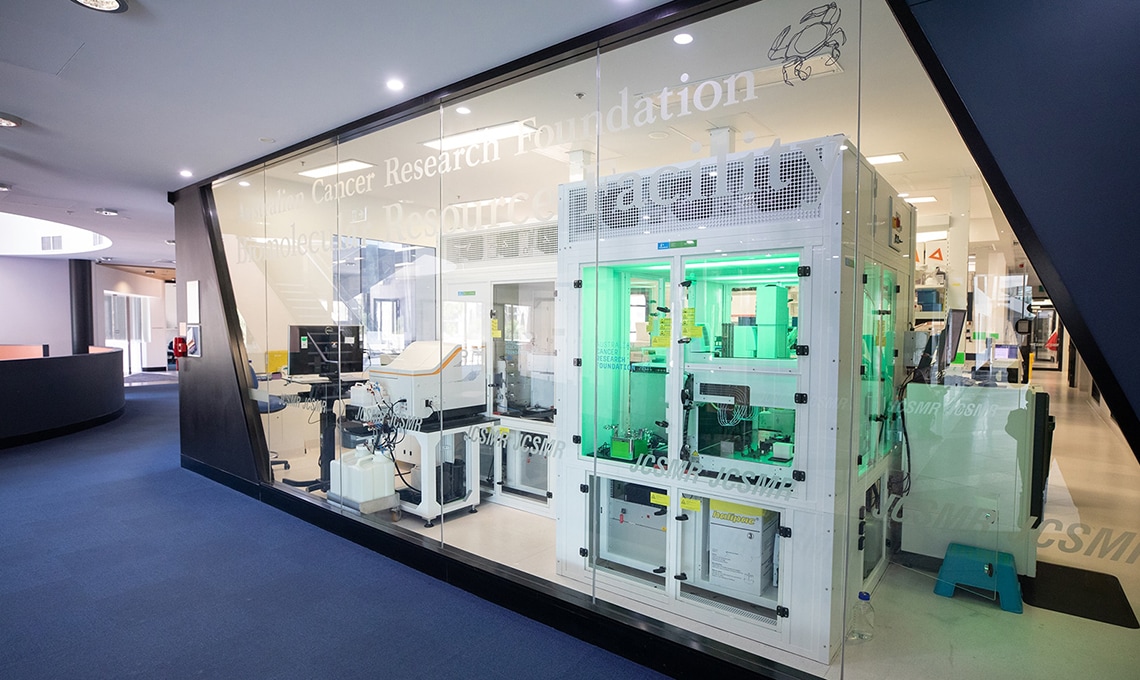
Efficient data transfer boosts genomic research for Australian laboratory
Genetics technical specialists at the Biomolecular Resource Facility are using the Globus data movement service through AARNet to share huge datasets with national and international collaborators.
The Biomolecular Resource Facility (BRF) is a core laboratory situated within the John Curtin School of Medical Research at the Australian National University (ANU) in Canberra. It provides researchers with cutting-edge techniques and equipment for molecular, genetic, and protein-based studies. Serving both ANU and the broader Australian scientific community, BRF offers consultancy and services, collaborating with national and international partners. Given the vast amounts of data generated by their advanced scientific instruments, BRF needed a fast, reliable solution for transferring this data.
Genome sequencing
Dr. Carolina Correa-Ospina, Technologies Specialist at BRF, recently collaborated with scientists from Plant & Food Research at the University of Otago, New Zealand. The project focused on studying various agricultural species to enhance practices like growing, fishing, and harvesting. Using the Oxford Nanopore PromethION platform, Dr. Correa-Ospina’s team sequenced the genomes, generating up to 1.6 TB of data per run. The challenge was efficiently and securely transferring this massive amount of data overseas without any risk of loss.
Data transfer challenge
Australia’s national research and education network, AARNet, offered a solution for BRF’s data movement challenge. After understanding the team’s requirements, AARNet recommended the Globus data management tool. Globus facilitates efficient, secure data transfer between systems globally, simplifying the sharing of large datasets across organisational boundaries.
As Globus’ partner for universities and research institutes in Australia, AARNet assisted in implementing the solution. BRF lacked the capacity for on-site data storage, so AARNet collaborated with the National Computational Infrastructure (NCI) at ANU to establish a Globus endpoint and storage. NCI, Australia’s leading high-performance computing and data storage service, provides resources that individual institutions might otherwise struggle to access.
AARNet leveraged the existing Globus endpoint and storage at the University of Otago to facilitate the transfer from BRF, ensuring seamless data movement.
Data transfer success
Carolina explained that data is transferred from BRF instruments to NCI’s Gadi supercomputer, where it is processed and stored for sharing. “When data collection is ready, we can simply log in to the user interface and share the data with our collaborator in minutes,” she said. “It has tremendously sped up the data delivery, as there is no extra copying required on our end and we don’t need to spend extra time and resources to compress the data into smaller files prior to transfer.”
Previously, BRF’s technical specialists created in-house methods for large data transfers, which were inefficient and hard to maintain. Local projects required manually copying data onto hard drives and delivering them by hand, a slow and laborious process.
For a recent project, Carolina and her team used Globus to transfer over 3 TB of genomic data to Plant & Food Research in New Zealand in just three hours. “Globus is extremely easy to use and incredibly fast,” Carolina commented. “Our collaborators very much like that they can receive their data within hours instead of days or weeks.”
In summary, the adoption of Globus has revolutionised data transfer at BRF, significantly accelerating the pace of genomic research and collaboration. The ability to quickly and securely share large volumes of data enhances research efficiency, allowing scientists to focus on groundbreaking discoveries rather than logistical challenges.
This is an edited version of a case study first published on the AARNet website: Data without borders: the role of Globus in international genome research
Photo: The Biomolecular Resource Facility laboratory at ANU. Credit: Tim Levy from the ACRF.
For more information please contact our contributor(s):

